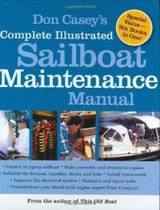Cruising Association Lecture Notes:
The Wrong Seacocks Can Sink Your Boat
Another great lecture at the Cruising Association earlier this week, this time on Surveying Yachts and Small Craft with Paul Stevens, yacht surveyor, lecturer and author. Paul currently teaches at the International Boat Building Training College in Lowestoft, UK.
Did we like him? Yup. He was passionate about his topic and it’s clear he knows his stuff. He cares about getting it right and keeping people alive on yachts that are safe.
The first half* of Paul’s lecture covered a serious issue he has helped to build awareness for recently: the use of brass skin fittings below the waterline… in salt water-sailed yachts!
What’s wrong with that? Apparently everything.
So What’s Wrong With Brass Fittings?
Brass seacocks in saltwater can corrode to failure in 5 years… or less!
Dezincification
Brass fittings in fresh water – okay. But in salt water, brass (an alloy of copper and zinc) corrodes to failure. It’s called dezincification. If there is any current in the water (as often happens in a marina) this can happen in less than a year.
What drives this?
Well, it costs about a quarter of the price to make a fitting out of brass...
Is this new knowledge?
Nope. Apparently the downside of using brass in this way has been known for about 90 years or more.
Why did this happen?
The new (since 1998) European Community’s Recreational Craft Directive (RCD) ISO Standard 9093-1 was rewritten to require only that fittings should be corrosion resistant for 5 years. (Though who knows why they were rewritten this way??…)
Huh? Not required to last the life of the boat, you say?
Nope. Not under the current EU regs.
And if they corrode through and fail beneath the waterline my whole boat will sink??
Uh-huh. Pretty fast too.
Is there a disaster waiting to happen under my waterline?
Yacht owners need to prove to themselves that their fittings are NOT brass.
There is currently no requirement in the EU to mark on packaging what components are made of. And the packaging of valves with and without brass are nearly identical. Even many chandleries are unaware of the difference between them due to this lack of clarity. Big problem.
How to check
Got written documentation of what your fittings are made of? Old packages? Documentation from the manufacturer of your boat? Can you write the manufacturer and get this in writing? If you are buying a new boat, the builder should definitely be willing to write this down…
You can also hammer-tap test every fitting that pierces the hull below the waterline. Even if the fittings were all put in at the same time and some of those other fittings have tested okay. Fittings may have been subsequently replaced with brass. Or some brass fittings may have gotten mixed in when the boat was first built due the unclear and very similar packaging.
Brass corrosion shows as a grey pinkish putty colour. It showed up as splodges on the outside of valves and especially in the threads of valves that Paul had to show us. Does the fitting collapse when you hammer-tap it (not a guaranteed test) or break off? Not a good sign.
If you can’t prove to yourself that all your fittings are not brass, then be safe. Replace them all.
Prevention is far cheaper than calamity.
The Right Stuff: Bronze and DZR
We should be using bronze! Or products that are clearly labelled/confirmed as dezincified resistant brass (DZR). Plastic is a possible alternative, but shouldn’t be installed around heat sources – say in or near the engine box.
How to be sure you’re getting bronze or DZR
If you don’t have documented proof that it’s not brass – better to be safe and replace them all.
How do you ensure this? Here are some ways:
- If the package states clearly that the product is bronze or DZR, then okay. If it does not mention what material it’s made of… then it’s brass.
- If the valve shows the ‘CR’ symbol on it when you turn it over, then it’s DZR. That’s good. But you can’t necessarily see this when it’s in the package.
- Another clue – bronze fittings cost 3 to 4 times more than brass ones.
- Blake seacocks now use DZR only.
- ISIS make a range of DZR ball valves.
- New Zealand make the True Plastic Range by Lee Sanitation. Also okay.
- ASAP Supplies will supply a list of what things they sell are made of.
Here’s a link to Paul’s site and articles on seacock safety and technical metals info. Here’s info on Essential Seacock Checks.
After Paul’s talk it looked like the vast majority of attendees would be down at their boat this weekend, checking for documentation and hammer-tap testing away to ensure the integrity of their fittings and the safety of their yachts.
Do you know what your seacocks are made of?
Does this situation exist in the US too?
–Captain Cat
(transcribed by the Can Opener)
* The second half of Paul’s lecture covered general surveying – tips on things to watch for and check before you buy a new boat (new to you) or during your yearly review of your current boat. Lecture notes on this coming soon in my upcoming post Cruising Association Lecture Notes: Tips on Yacht Surveying.
Cruising Lectures
Next: Why Yacht Surveys Save Money
Previously: Going to a Lecture On: How To Survey A Boat









